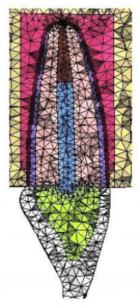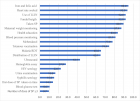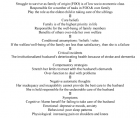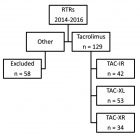Abstract
Research Article
Can the Wondfo® SARS-CoV-2 IgM/IgG antibodies be used as a rapid diagnostic test?
Makson Gleydson Brito De Oliveira*, Lysandro Pinto Borges, Daniela Raguer Valadão de Souza, Kezia Alves Dos Santos and Luana Heimfarth
Published: 21 October, 2020 | Volume 4 - Issue 1 | Pages: 013-017
Background: An outbreak of novel coronavirus (SARS-CoV-2) disease (COVID-19) has rapidly spread worldwide. The aim of this study was to evaluate and validate the performance of the Wondfo® lateral-flow immunochromatographic assay that detect SARS-CoV-2- IgG, IgM antibodies (Wondfo® IC), using the results obtained by the fluorescence immunoassay test as reference diagnostic.
Material and methods: 97 serum specimens collected and analyzed by four independent laboratories of Sergipe/Brazil was used for validated the Wondfo® SARS-CoV-2 IgM/IgG antibodies test. The COVID-19 positive serum specimens were determined by fluorescence immunoassay technique, used as reference standard.
Results: An overall of 97 serum specimens show 39 (39/97) SARS-CoV-2 IgG positive specimens, 33 (33/97) SARS-CoV-2 IgM positive specimen and 25 non-reagent specimens (25/97). However, the Wondfo® IC assay detected only 9 (9/97) IgM/IgG positive specimen and 25 (25/97) no-reagent specimen. A weak correlation was found between the outcomes of the Wondfo® IC assay and fluorescence test. The accuracy between the two tests was 32.08%. The sensitivity, specificity, positive predictive value, and negative predictive value of Wondfo® IC assay were of 11.12%, 100%, 100% and 25.27%, respectively. Moreover, no false positive sample was determinate, whereas 88.89% of false negative results were found.
Conclusion: The Wondfo® IC test failed in providing a quick, valid, and reliable results and appears not to be a good alternative for clinical use in detecting pandemic coronavirus. However, if the limitations of the rapid test are known, some correction factors can be used in order to adjust the epidemiological data.
Read Full Article HTML DOI: 10.29328/journal.abb.1001017 Cite this Article Read Full Article PDF
Keywords:
COVID-19; New coronavirus; Immunochromatographic assay; Validation; Fluorescence immunoassay test
References
- Huang C, Wang Y, Li X, Ren L, Zhao J, et al. Clinical features of patients infected with 2019 novel coronavirus in Wuhan, China. Lancet. 2020; 395: 497–506.
- WHO Coronavirus disease 2019 (COVID-19): situation report, accessed may18, 2020. https://www.who.int/emergencies/diseases/novel-coronavirus
- Jin Y, Yang H, Ji W, Wu W, Chen S, et al. Virology, Epidemiology, Pathogenesis, and Control of COVID-19. Viruses. 2020; 27: 12: 372. PubMed: https://pubmed.ncbi.nlm.nih.gov/32230900/
- Ahn DG, Shin HJ, Kim MH, Lee S, Kim HS, et al. Current Status of Epidemiology, Diagnosis, Therapeutics, and Vaccines for Novel Coronavirus Disease 2019 (COVID-19). J Microbiol Biotechnol. 2020; 30: 313–324. PubMed: https://pubmed.ncbi.nlm.nih.gov/32238757/
- Vashist SK. In Vitro Diagnostic Assays for COVID-19: Recent Advances and Emerging Trends. Diagnostics (Basel). 2020; 10: 202. PubMed: https://pubmed.ncbi.nlm.nih.gov/32260471/
- Loeffelholz MJ, Tang Y-W. Laboratory diagnosis of emerging human coronavirus infections - the state of the art. Emerg Microbes Infect. 2020; 9: 747–756. PubMed: https://pubmed.ncbi.nlm.nih.gov/32196430/
- Tang YW, Schmitz JE, Persing DH, Stratton CW. The Laboratory Diagnosis of COVID-19 Infection: Current Issues and Challenges. J Clin Microbiol. 2020; 58: 512-520. PubMed: https://pubmed.ncbi.nlm.nih.gov/32245835/
- Pan Y, Li X, Yang G, Fan J, Tang Y, et al. Serological immunochromatographic approach in diagnosis with SARS-CoV-2 infected COVID-19 patients. J Infect. 2020; 81: 28-32. PubMed: https://pubmed.ncbi.nlm.nih.gov/32283141/
- Montesinos I, Gruson D, Kabamba B, Dahma H, Van den Wijngaert S, et al. Evaluation of two automated and three rapid lateral flow immunoassays for the detection of anti-SARS-CoV-2 antibodies. J Clin Virol. 2020; 128: 104413. PubMed: https://www.ncbi.nlm.nih.gov/pmc/articles/PMC7198434/
- Venter M, Richter K. Towards effective diagnostic assays for COVID-19: a review. J Clin Pathol. 2020; 73: 370-377. PubMed: https://pubmed.ncbi.nlm.nih.gov/32404473/
- Demey B, Daher N, François C, Lanoix JP, Duverlie G, et al. Dynamic profile for the detection of anti-SARS-CoV-2 antibodies using four immunochromatographic assays. J Infect. 2020; PubMed: https://www.ncbi.nlm.nih.gov/pmc/articles/PMC7204722/
- Vásárhelyi B, Kristóf K, Ostorházi E, Szabó D, Prohászka Z, et al. The diagnostic value of rapid anti IgM and IgG detecting tests in the identification of patients with SARS CoV-2 virus infection. Orv Hetil. 2020; 161: 807–812. PubMed: https://pubmed.ncbi.nlm.nih.gov/32364358/
- Chen G, Wu D, Guo W, Cao Y, Huang D, et al. Clinical and immunological features of severe and moderate coronavirus disease 2019. J Clin Invest. 2020; 130: 2620–2629. PubMed: https://pubmed.ncbi.nlm.nih.gov/32217835/
- Vardhana SA, Wolchok JD. The many faces of the anti-COVID immune response. J Exp Med. 2020; 217: 20200678. PubMed: https://www.ncbi.nlm.nih.gov/pmc/articles/PMC7191310/
- Imai K, Tabata S, Ikeda M, Noguchi S, Kitagawa Y, et al. Clinical evaluation of an immunochromatographic IgM/IgG antibody assay and chest computed tomography for the diagnosis of COVID-19. J Clin Virol. 2020; 128: 104393. PubMed: https://pubmed.ncbi.nlm.nih.gov/32387968/
- Cassaniti I, Novazzi F, Giardina F, Salinaro F, Sachs M, et al. Members of the San Matteo Pavia COVID-19 Task Force. Performance of VivaDiag COVID-19 IgM/IgG Rapid Test is inadequate for diagnosis of COVID-19 in acute patients referring to emergency room department. J Med Virol. 2020; 10. PubMed: https://pubmed.ncbi.nlm.nih.gov/32227490/
Similar Articles
-
Statistical and equation model analysis on COVID-19Bin Zhao*,Jinming Cao. Statistical and equation model analysis on COVID-19. . 2020 doi: 10.29328/journal.abb.1001016; 4: 005-012
-
Can the Wondfo® SARS-CoV-2 IgM/IgG antibodies be used as a rapid diagnostic test?Makson Gleydson Brito De Oliveira*,Lysandro Pinto Borges,Daniela Raguer Valadão de Souza,Kezia Alves Dos Santos,Luana Heimfarth. Can the Wondfo® SARS-CoV-2 IgM/IgG antibodies be used as a rapid diagnostic test?. . 2020 doi: 10.29328/journal.abb.1001017; 4: 013-017
-
Packaging challenge for COVID-19 drugAnupam Chand*. Packaging challenge for COVID-19 drug. . 2019 doi: 10.29328/journal.abb.1001019; 4: 028-036
-
Hypertension and sex related differences in mortality of COVID-19 infection: A systematic review and Meta-analysisProbir Kumar Ghosh*,Mohammad Manir Hossain Mollah,ABM Alauddin Chowdhury,Nazmul Alam,Golam Dostogir Harun. Hypertension and sex related differences in mortality of COVID-19 infection: A systematic review and Meta-analysis. . 2020 doi: 10.29328/journal.abb.1001020; 4: 037-043
-
OPEN and CLOSED state of SPIKE SARS-COV-2: relationship with some integrin binding. A biological molecular approach to better understand the coagulant effectLuisetto M*,Khaled Edbey,Mashori GR,Yesvi AR,Latyschev OY. OPEN and CLOSED state of SPIKE SARS-COV-2: relationship with some integrin binding. A biological molecular approach to better understand the coagulant effect . . 2021 doi: 10.29328/journal.abb.1001028; 5: 049-056
-
Diagnostic evaluation of nasopharyngeal swab and saliva kits against SARS-CoV-2: Adequate rapid screening is deemed necessary to overcome COVID-19 PandemicMuhammad Danish Yaqoob,Muhammad Abdul Ahad Khawaja,Qurat-ul-Ain Amjad,Atika Waseem,Kashmala Kanwal,Haleema Nadeem,Madiha Munir,Syeda Mushiat Zahra,Zahra Zahid Piracha,Umar Saeed*. Diagnostic evaluation of nasopharyngeal swab and saliva kits against SARS-CoV-2: Adequate rapid screening is deemed necessary to overcome COVID-19 Pandemic. . 2022 doi: 10.29328/journal.abb.1001032; 6: 010-013
-
Diagnostic evaluation of nasopharyngeal swab and saliva kits against SARS-CoV-2: Adequate rapid screening is deemed necessary to overcome COVID-19 PandemicMuhammad Danish Yaqoob,Muhammad Abdul Ahad Khawaja,Qurat-ul-Ain Amjad,Atika Waseem,Kashmala Kanwal,Haleema Nadeem,Madiha Munir,Syeda Mushiat Zahra,Zahra Zahid Piracha,Umar Saeed*. Diagnostic evaluation of nasopharyngeal swab and saliva kits against SARS-CoV-2: Adequate rapid screening is deemed necessary to overcome COVID-19 Pandemic. . 2022 doi: 10.29328/journal.abb.1001032; 6: 010-013
-
Diagnostic evaluation of nasopharyngeal swab and saliva kits against SARS-CoV-2: Adequate rapid screening is deemed necessary to overcome COVID-19 PandemicMuhammad Danish Yaqoob. Diagnostic evaluation of nasopharyngeal swab and saliva kits against SARS-CoV-2: Adequate rapid screening is deemed necessary to overcome COVID-19 Pandemic. . -0001 doi: 10.29328/journal.abb.1001032; 6: 010-013
Recently Viewed
-
Molecular Mechanisms and Potential Predictive Biomarkers in Advanced Non-small Cell Lung Cancer: A Summary of Current and Future TrendsIsabella Sforzin*, Juliana Rodrigues Beal, Fernando Moura. Molecular Mechanisms and Potential Predictive Biomarkers in Advanced Non-small Cell Lung Cancer: A Summary of Current and Future Trends. Arch Surg Clin Res. 2024: doi: 10.29328/journal.ascr.1001082; 8: 039-061
-
Flood Risk Management in South-west Nigeria: Lagos as a Case StudyIdowu Michael*. Flood Risk Management in South-west Nigeria: Lagos as a Case Study. Ann Civil Environ Eng. 2024: doi: 10.29328/journal.acee.1001073; 8: 096-097
-
Improving the Concrete Compressive and Flexural Strength with a Low Fraction Addition of Carboxylated Nitro-oxidized Cellulose Nanofibrils from Banana RachisNgesa Ezekiel Mushi*, Emmanuel Kagya. Improving the Concrete Compressive and Flexural Strength with a Low Fraction Addition of Carboxylated Nitro-oxidized Cellulose Nanofibrils from Banana Rachis. Ann Civil Environ Eng. 2024: doi: 10.29328/journal.acee.1001072; 8: 087-095
-
Development of a Web-based Tomato Plant Disease Detection and Diagnosis System using Transfer Learning TechniquesTE Ogunbiyi*, AM Mustapha, EJ Eturhobore, MJ Achas, TA Sessi. Development of a Web-based Tomato Plant Disease Detection and Diagnosis System using Transfer Learning Techniques. Ann Civil Environ Eng. 2024: doi: 10.29328/journal.acee.1001071; 8: 076-086
-
Quantifying Levels of Selected Metals in Different Rice BrandsJamila M Machano, Abdul AJ Mohamed*, Said S Bakar. Quantifying Levels of Selected Metals in Different Rice Brands. Ann Civil Environ Eng. 2024: doi: 10.29328/journal.acee.1001070; 8: 072-075
Most Viewed
-
Evaluation of Biostimulants Based on Recovered Protein Hydrolysates from Animal By-products as Plant Growth EnhancersH Pérez-Aguilar*, M Lacruz-Asaro, F Arán-Ais. Evaluation of Biostimulants Based on Recovered Protein Hydrolysates from Animal By-products as Plant Growth Enhancers. J Plant Sci Phytopathol. 2023 doi: 10.29328/journal.jpsp.1001104; 7: 042-047
-
Sinonasal Myxoma Extending into the Orbit in a 4-Year Old: A Case PresentationJulian A Purrinos*, Ramzi Younis. Sinonasal Myxoma Extending into the Orbit in a 4-Year Old: A Case Presentation. Arch Case Rep. 2024 doi: 10.29328/journal.acr.1001099; 8: 075-077
-
Feasibility study of magnetic sensing for detecting single-neuron action potentialsDenis Tonini,Kai Wu,Renata Saha,Jian-Ping Wang*. Feasibility study of magnetic sensing for detecting single-neuron action potentials. Ann Biomed Sci Eng. 2022 doi: 10.29328/journal.abse.1001018; 6: 019-029
-
Pediatric Dysgerminoma: Unveiling a Rare Ovarian TumorFaten Limaiem*, Khalil Saffar, Ahmed Halouani. Pediatric Dysgerminoma: Unveiling a Rare Ovarian Tumor. Arch Case Rep. 2024 doi: 10.29328/journal.acr.1001087; 8: 010-013
-
Physical activity can change the physiological and psychological circumstances during COVID-19 pandemic: A narrative reviewKhashayar Maroufi*. Physical activity can change the physiological and psychological circumstances during COVID-19 pandemic: A narrative review. J Sports Med Ther. 2021 doi: 10.29328/journal.jsmt.1001051; 6: 001-007

HSPI: We're glad you're here. Please click "create a new Query" if you are a new visitor to our website and need further information from us.
If you are already a member of our network and need to keep track of any developments regarding a question you have already submitted, click "take me to my Query."


















































































































































